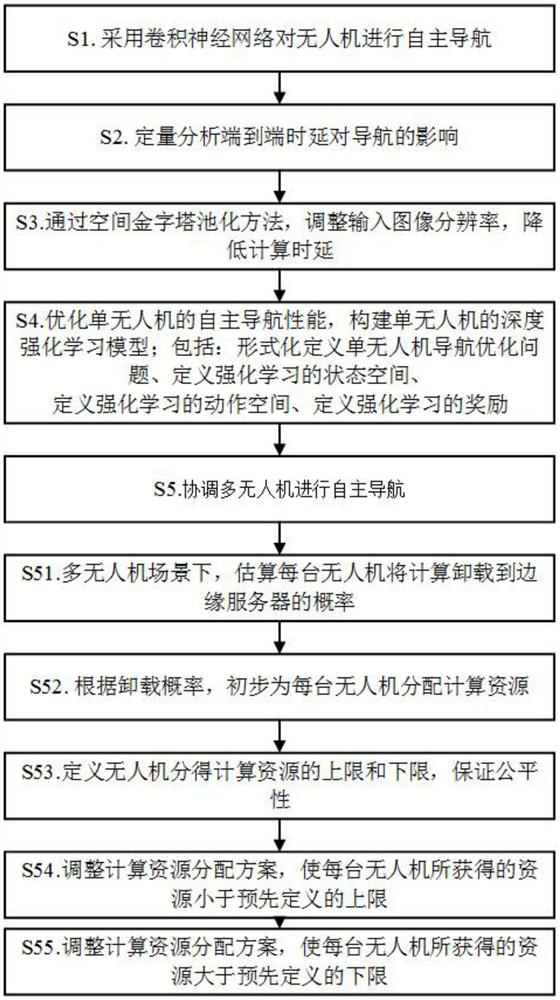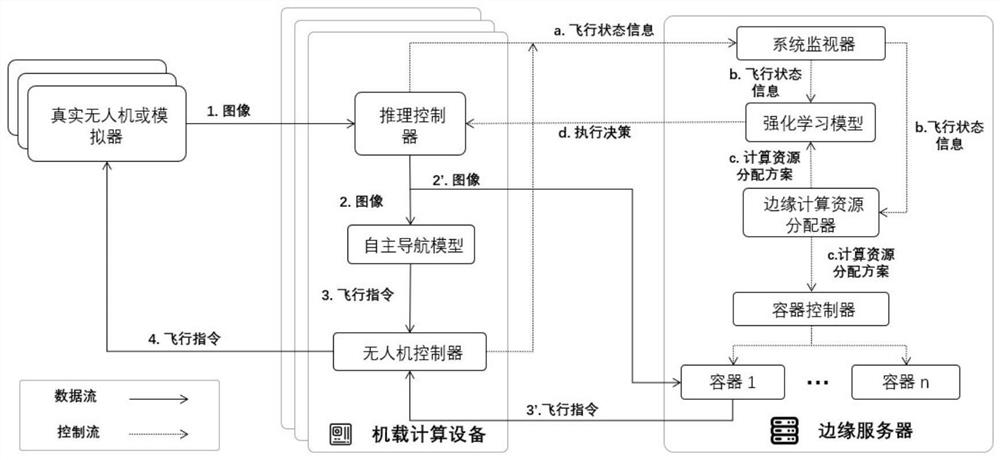End-side collaborative multi-unmanned aerial vehicle autonomous navigation method
An autonomous navigation, multi-UAV technology, applied in navigation computing tools, neural learning methods, mechanical equipment, etc., can solve problems such as unacceptable memory usage, drag down system performance, system overhead, etc., to save overhead and system performance. High and low end-to-end latency and accuracy
- Summary
- Abstract
- Description
- Claims
- Application Information
AI Technical Summary
Problems solved by technology
Method used
Image
Examples
Embodiment Construction
[0052] The accompanying drawings are for illustrative purposes only, and should not be construed as limiting the present invention; in order to better illustrate this embodiment, certain components in the accompanying drawings will be omitted, enlarged or reduced, and do not represent the size of the actual product; for those skilled in the art It is understandable that some well-known structures and descriptions thereof may be omitted in the drawings. The positional relationship described in the drawings is for illustrative purposes only, and should not be construed as limiting the present invention.
[0053] Such as figure 1 As shown, a multi-UAV autonomous navigation method with end-side coordination includes the following steps:
[0054] Step 1. Use convolutional neural network to autonomously navigate the drone; this is an end-to-end approach: use the forward-facing camera of the drone to obtain an image of the current environment, which is used as the input of the navig...
PUM
 Login to View More
Login to View More Abstract
Description
Claims
Application Information
 Login to View More
Login to View More - R&D
- Intellectual Property
- Life Sciences
- Materials
- Tech Scout
- Unparalleled Data Quality
- Higher Quality Content
- 60% Fewer Hallucinations
Browse by: Latest US Patents, China's latest patents, Technical Efficacy Thesaurus, Application Domain, Technology Topic, Popular Technical Reports.
© 2025 PatSnap. All rights reserved.Legal|Privacy policy|Modern Slavery Act Transparency Statement|Sitemap|About US| Contact US: help@patsnap.com



